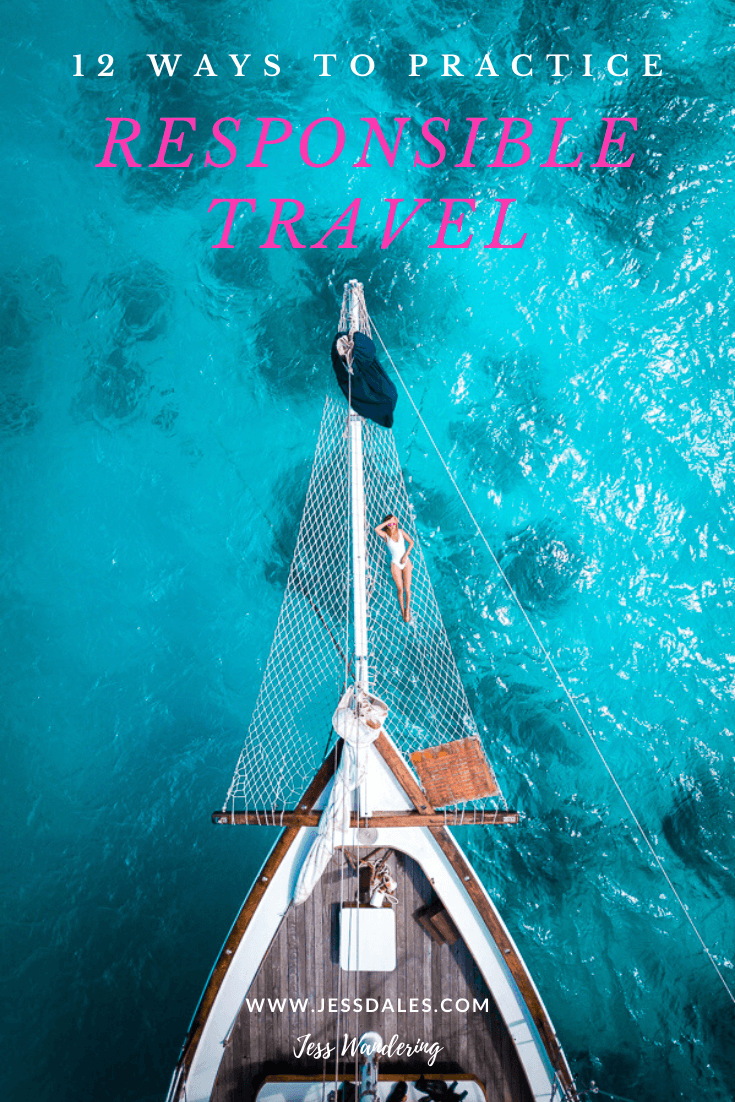
In partnership with Backcountry.
What Is Responsible Tourism?
In this era of flight shaming, eco-anxiety, and climate activism, it’s hard to ignore the dark side of travel. Over-tourism has been a concern in the travel industry for as long as I can remember. Until I started traveling full time for my job a few years ago, I didn’t realize that the catchphrase referred to more than just long lines and crowded viewpoints. As I began to travel more, I saw first hand the negative impact that travel can have on local environments, native cultures, and wildlife.
Of course, travel isn’t all bad. There are some overwhelmingly positive aspects as well. Money from tourism also supports local economies, encourages conservation efforts, and protects native wildlife. But perhaps most importantly, travel exposes people to environments and cultures that they might not otherwise even know exist. The experiences that come with that exposure are critical. Humans are more likely to protect the things they care about. We are more likely to care when we have had an experience that connects us to a place. Travel provides that connection.
Perhaps the most critical message here is that not all travel is created equal.
We control the impact—negative or positive—that our travel has.
At its core, responsible tourism is all about making simple choices to lessen your negative impact on a given destination. Individually, each one of these choices may only make a small difference. But collectively, becoming more conscious about the little things will have a substantial cumulative impact. The best part of this awareness is that many of these small things can be incorporated into our daily lives, where they will have an even more significant impact over time.
We will make mistakes, and sometimes our actions will have a more considerable impact than intended, the important thing is that we keep learning and growing. Responsible travel doesn’t have to be complicated! Nor does it have to ruin all the fun. On the contrary, many of the responsible travel tips below will enrich your travel experience by helping you connect deeper with your destination and the people that call it home.

Carrying the Fjallraven Re-Kanken Backpack. This special edition of the Swedish manufacturer’s classic backpack is made from 11 recycled plastic bottles, and comes in a ton of fun colors!
How To Travel More Responsibly
1. Responsible Travel Starts Before Your Trip
If you’re anything like me, you like to do tons of research (maybe a little too much), before making even the tiniest decisions. That quality is actually a great thing when it comes to responsible travel. It’s hard to do the appropriate research when you arrive at a destination tired, hungry, and without resources like wifi. It’s in those moments that you’re most likely to grab a bottled water, flag down a taxi, and book a room in the first hotel you see. Desperate times call for desperate measures, after all.
By doing your research beforehand, you will be able to make well-informed decisions based on your values, and save yourself a lot of stress at the same time! We are lucky that we live in a time when information is so readily available. Resources about local customs, public transportation options, and eco-friendly accommodations for most destinations are all available at the tip of our fingers – for FREE! All we need is a little bit of time and initiative.
2. Offset Your Impact
Perhaps one of the most significant changes we can make to become more responsible travelers is to be more aware of HOW we travel. The fact is that people are flying more than ever, and that’s unlikely to change. Which is terrible news for our global energy-related carbon emissions. In light of aviation’s growing emissions problem, it’s more important than ever to look at alternative modes of transportation. However, alternatives are not always going to be a viable option. When that’s the case, buying carbon offsets is an easy, low-cost way to help negate the impact of flying.
Carbon offsets offer a way to balance out your emission by investing in projects that reduce greenhouse gases in the atmosphere. These projects vary widely, but in the end, the specifics don’t necessarily matter, as long as it offsets your personal carbon output. That being said, if you decide to purchase carbon offsets, it’s vital to work with a reputable company. Sites such as Green-e, Gold Standard, Carbonfootprint.com, or Atmosphere can help you calculate and offset your emissions through reputable organizations or global projects.

3. Choose Ethical & Sustainable Accommodations
It’s not always easy to find eco-friendly accommodations. Not because there aren’t any, but because most web sites and search engines aren’t designed to filter through thousands of available accommodations to find the most environmentally responsible ones. On top of that, not all accommodations are transparent about their commitment to sustainable practices. I mean, what does “eco-lodge” even mean?
But there are also some really great accommodations out there that are changing the world of sustainable tourism. You just need to know how to find them! When researching accommodations, look for places that pride themselves in nurturing the kind of tourism that respects nature, the economy, and the local communities. Generally, if the hotel is legit, you will be able to find this information on their website. But how to find them in the first place? Well, there are search engines destined specifically for this oh so important task! Some of my favorites are Ecobnb.com, GreenPearls.com, and BookDifferent.com.

Long before catch phrases like “eco-tourism” and “eco-resort” went main stream Bucuti & Tara Beach Resort on Aruba wanted to promote environmentally conscious luxury. The result is North America’s first CarbonNeutral® resort hotel.
4. Pack Light
This one’s pretty simple. When your gear weighs less, the airplane weighs less, which means less fuel and fewer carbon emissions used for your trip. Plus, packing light is a great way to practice minimalism in your everyday life.
Minimalism is not a style, it is an attitude, a way of being. It is an organic reaction against noise, distraction, and disorder. You don’t need more things to make yourself happy. You need fewer things distracting you from what you already have that makes you happy. After all, we travel to expand our boundaries, learn about new cultures, and leave our day-to-day lives behind, not to drag it around in our luggage! So, leave that heavy checked luggage full of stuff you’re not going to use anyway and pack like a minimalist pro!
5. Invest In sustainable Products that will last forever
Every choice we make as consumers has an impact. While that might seem daunting, I actually find it comforting to know that I can make a difference with my wallet. By deciding to buy products from companies that value quality over quantity, and prioritize sustainability throughout their production chain, I’m impacting the standard that brands need to achieve to remain relevant.
Less is often more in the context of responsible travel. But if you are going to buy new products or clothing for your trip, supporting the right brands matters. Before purchasing look into that companies environmental policies. Do they use recycled materials? Are their products designed to last? How are their workers treated? Are they a Certified B Corporation? All of these factors can help you make a purchase you can feel good about.
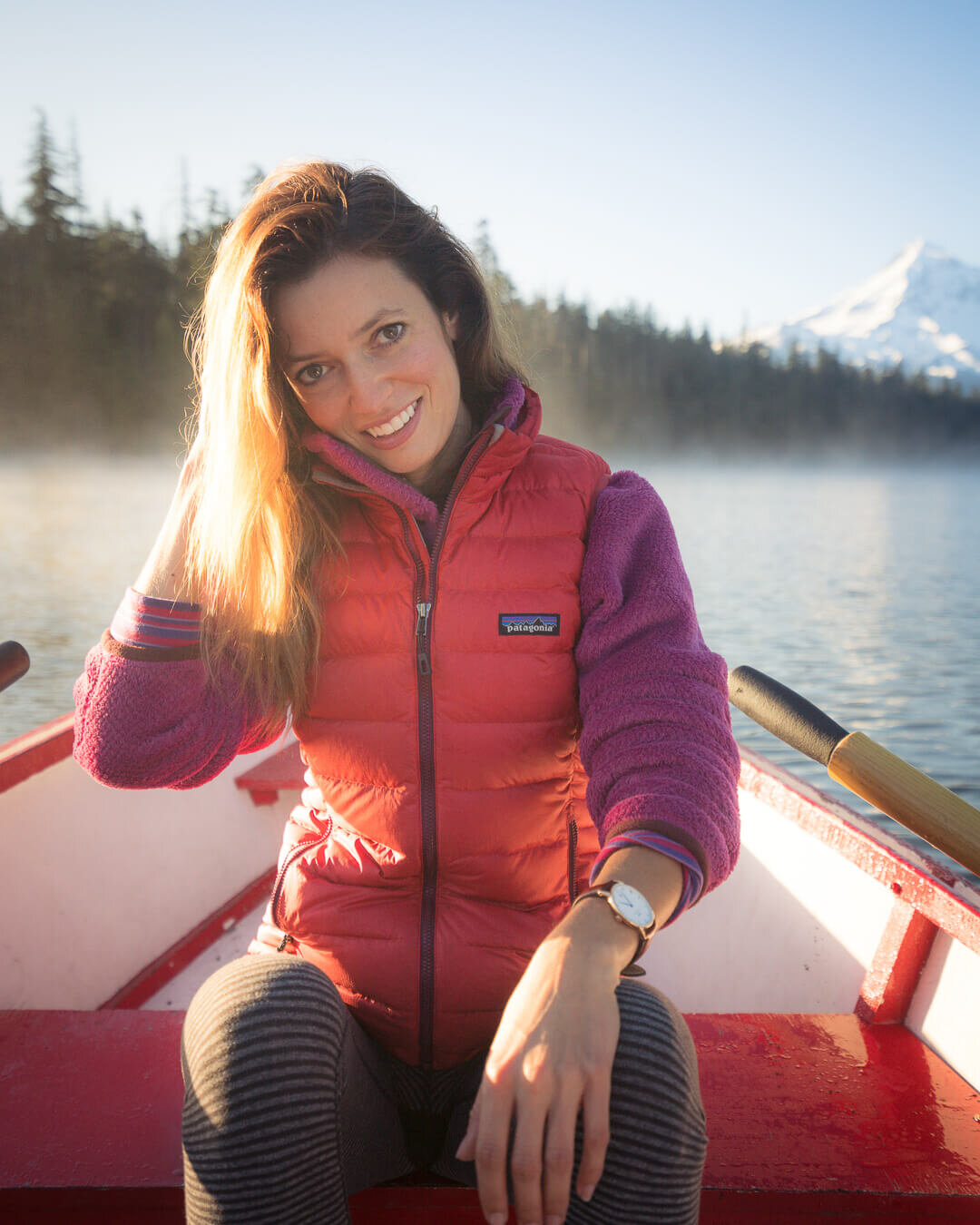
Patagonia has a long history of prioritizing sustainability in their outdoor clothing. Wearing: Patagonia Down Sweater Vest over the Patagonia Re-Tool Snap-T Fleece Pullover.
Here are a few brands that are known in the outdoor industry for incorporating environmentally sustainable practices into their business models. And for making darn good clothing on top of that!
Patagonia –
was one of the earliest supporters of environmental ethics in the outdoor industry, and one of the first adopters of using recycled and organic materials in their textiles. Staples such as the Better Sweater is not only made of 100% recycled polyester fleece, I’ve owned mine for years thanks to Patagonia’s emphasis on quality over quantity. Moreover, Patagonia has been at the forefront of labor ethics both in its factories and storefronts.
Cotopaxi –
As a Certified B Corporation, Cotopaxi has made a commitment to do more good than harm. In the process, they have established themselves as one of the best eco-friendly outdoor apparel brands out there. Their Teca Windbreaker will keep you warm with the knowledge that it’s made from 100% remnant fabric. But Cotopaxi isn’t just about clothing. They also provide funding for positive global initiatives around the world.
Houdini –
Houdini is a Swedish outdoor brand that places sustainability at the heart of everything they do. At Houdini, there is no distinction between sustainability and good business. They are continually working to transform performance design – and they’ve already made some incredible strides. Oh, and did I mention that their clothing is some of the most comfortable I’ve ever had the pleasure of wearing!
You don’t need a lot to be a more responsible traveler – after all the idea is to use less, not more. But a small investment in a few items can drastically reduce the amount of waste you consume and leave behind. Not only does Backcountry have an impressive selection of outdoor and everyday gear, they’re also a great resource for sustainable products. Use JESS15 at checkout to get 15% off your entire first order. Some exclusion might apply.
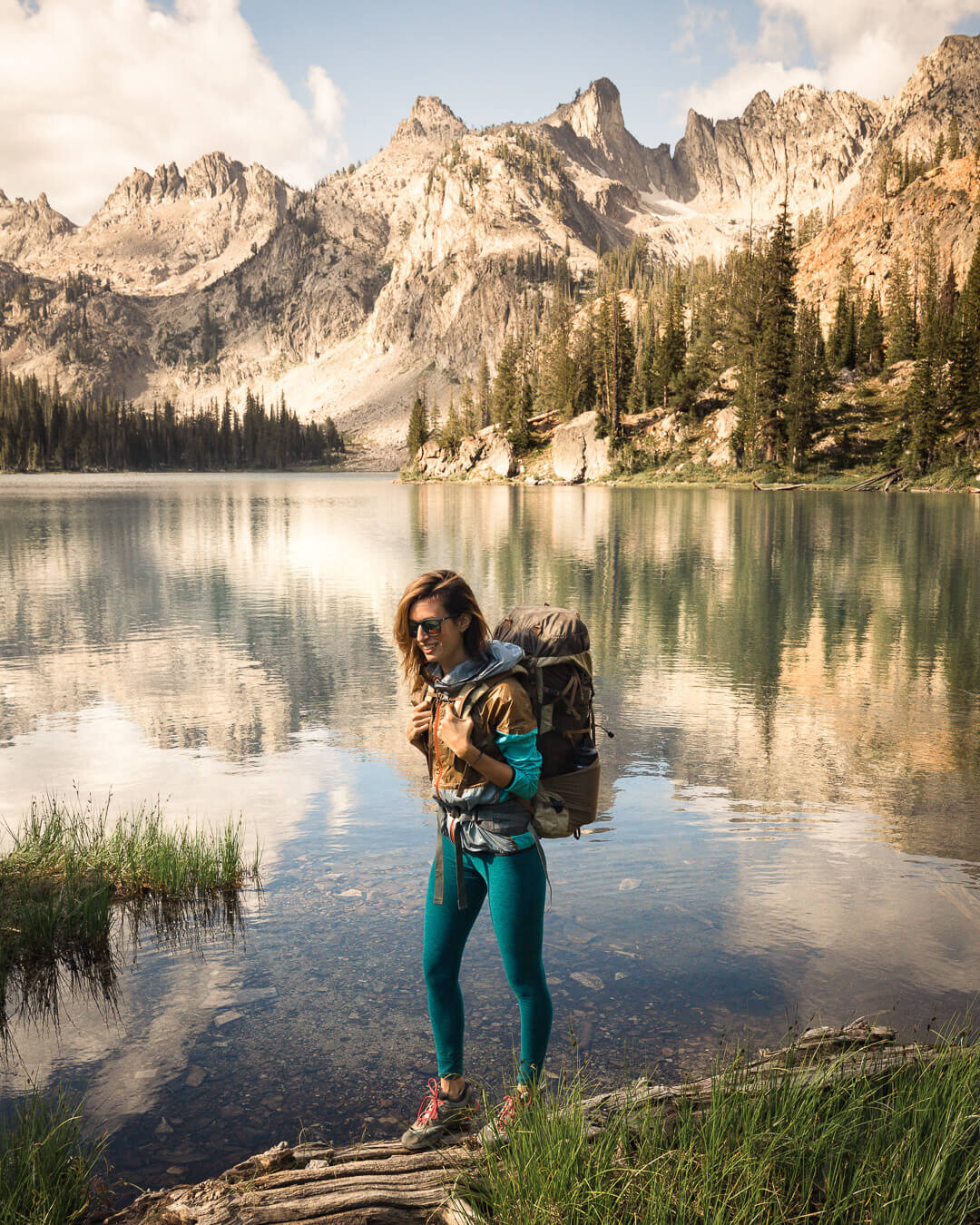
Cotopaxi is another wonderful outdoor brand with a strong focus on sustainability. Wearing the Cotopaxi Teca Windbreaker comes in a ton of fun color combinations.
6. Say No To Single-Use Plastic
The effect of plastic on marine life, air quality, and the ocean’s well-being cannot be underestimated. The Great Pacific Garbage Patch, a swirling mass of human trash twice the size of Texas, includes gazillions of single-use plastic containers that will take hundreds of years to break down—all the while wreaking havoc on marine ecosystems.
Luckily, it’s actually not that hard to cut most of this single-use plastic from your life. Whenever possible, opt for reusable water bottles, coffee cups, straws, utensils, bags, etc. A small upfront investment in these items will drastically reduce the amount of plastic waste you produce. But that’s not all! Choosing to cut single-use plastic out of your life will also reduce your carbon footprint by cutting back on the number of petroleum-based ingredients we consume.
The single best reusable water bottle I have found for travel is the Grayl Ultralight Purifier (the Grayl Geopress is also great). Hydroflask and Nalgene bottles are all fine and dandy when you are traveling in destinations that have potable water. But it’s not always an option to simply refill your reusable bottle. In the past, places that lacked clean water sources were the ones I was most likely to indulge in single-use drinking containers. Unfortunately, these destinations are also the least likely to have the type of infrastructure required for recycling and reusing single-use containers. The Grayl kills two birds with one stone by incorporating a filtration system that removes bacteria as well as many viruses from the water.
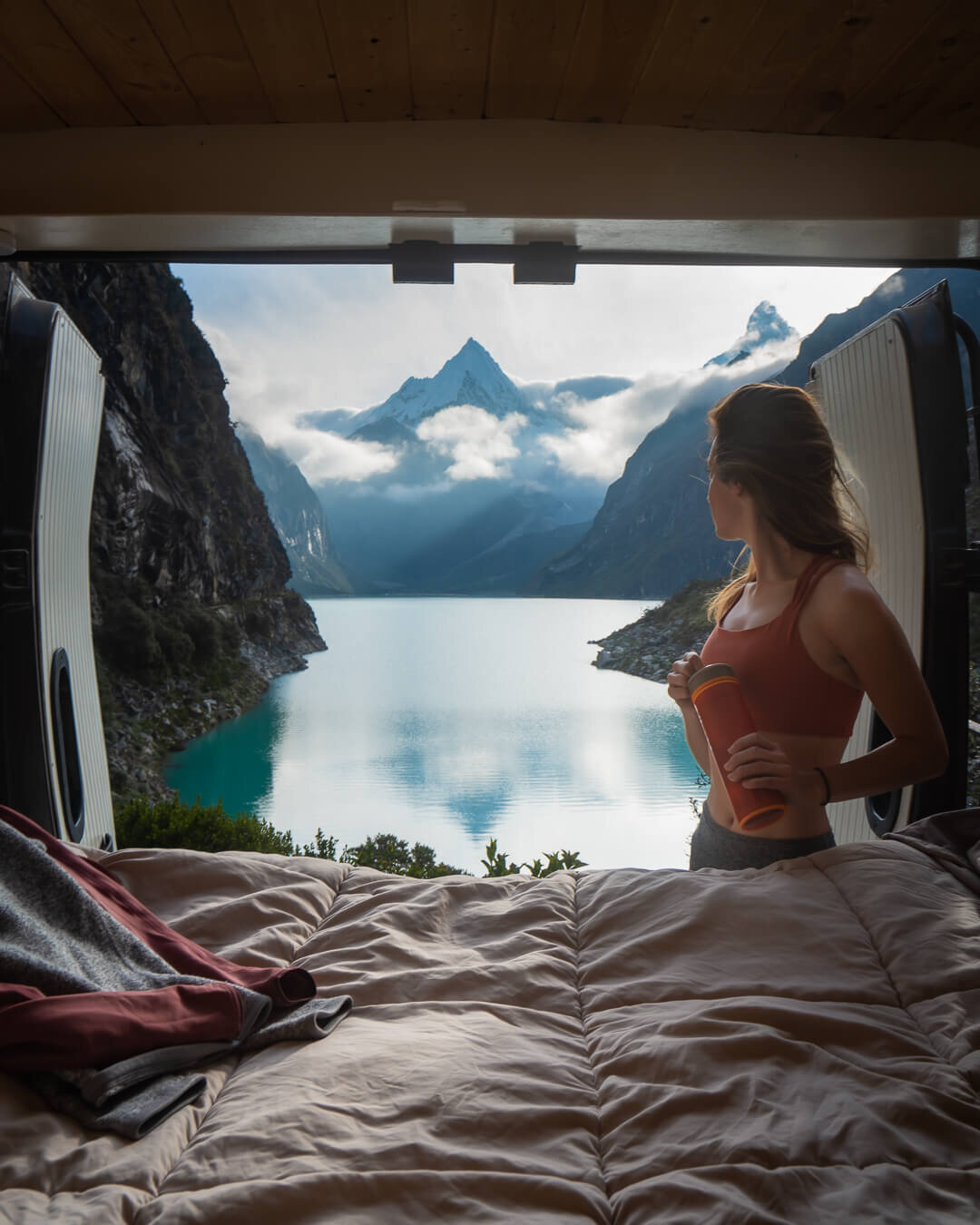
I used the Grayl Ultralight Purifier water bottle in Peru to filter water in wilderness areas as well as out of the faucet to insure I always had safe drinking water.
7. Be Reef Friendly
It’s not hard to understand why tropical destinations are so popular. They are warm, sunny, and the underwear world is more accessible than usual. Unfortunately, several common sunscreen ingredients, including oxybenzone and octinoxate, are toxic to coral and other ocean life – so make sure to pack appropriately! Whether you live on the coast, in the mountains, or somewhere in between, reef health affects us all, and the impact you have on the marine ecosystem during your vacation can last long after you’ve returned home.
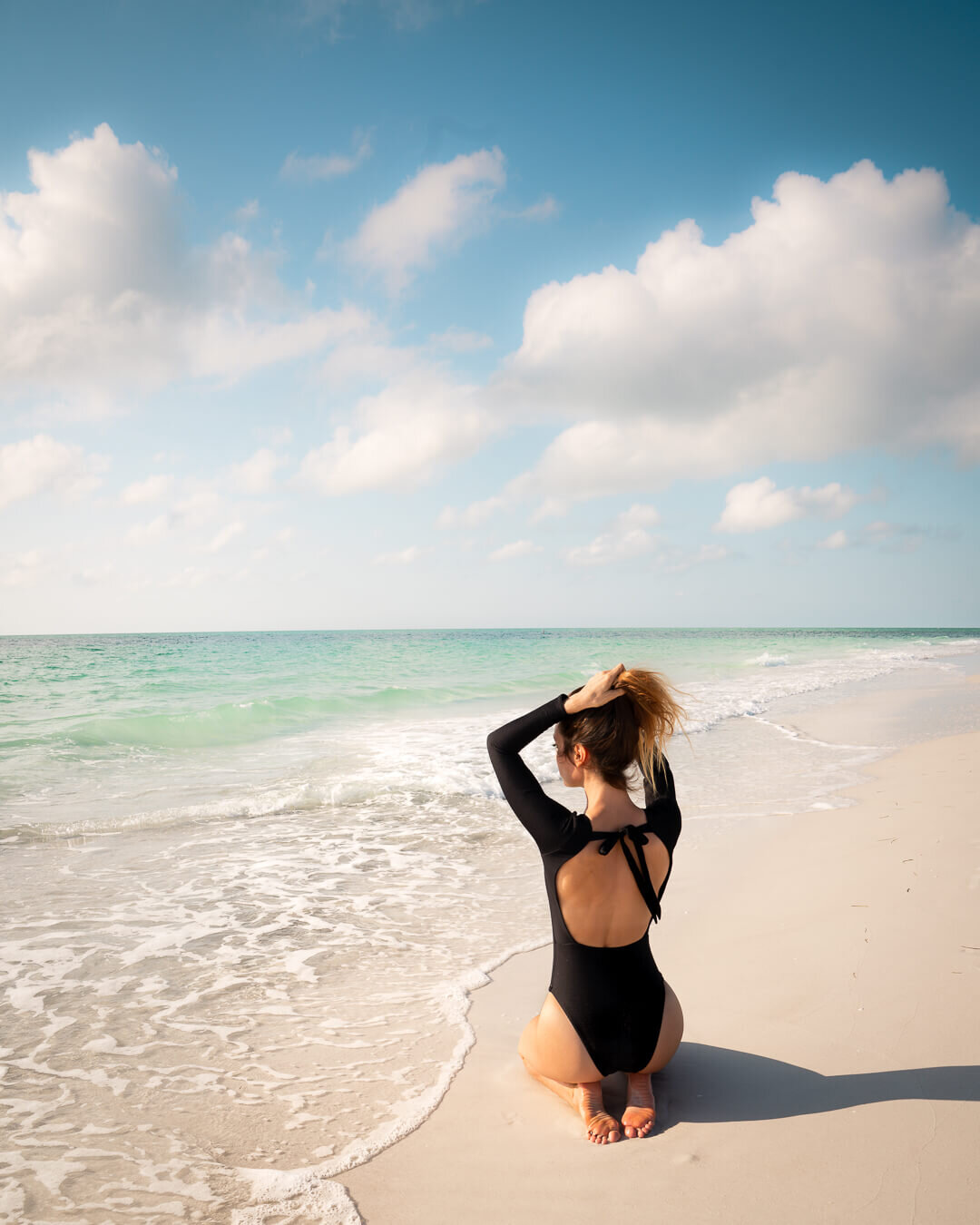
Fashion is the second biggest industrial cause of pollution (after oil) in the world. Brands like Vitamin A, are trying to change that by not only producing sustainable swimwear that will last for year, but also partnering with environmental organizations like One Planted Tree.
8. Support Local Economies
There are a lot of economies, and thus local communities out there who rely on tourism as their primary source of income. If it weren’t for tourism money, these communities would likely have to resort to alternative sources of revenue. And while tourism can get a bad rap, it’s a far better option than alternatives that involve resource exploitation or illicit activities.
Money talks, and the tourism industry has the power to encourages conservation of natural resources, local culture, and sustainable practices. Let’s face it, the average tourist doesn’t like showing up to a destination only to find piles of trash, dead coral reefs, and clear cut forests. That’s why it’s so important to put in the extra effort to make sure that you are supporting local communities, people, and businesses when you travel.
I’ll be the first to admit that my impulse when I travel is to explore on my own. But more recently, I’ve been making an effort to hire local guides. Sure, it might be more expensive to travel that way, just like purchasing locally made crafts and souvenirs, or staying at locally-owned accommodations, but it’s a great way to ensure your contribution to the economy will have a more direct and positive impact.
9. Eat Local And Seasonal
Food is a way of life in a lot of places, and there are few better ways to tap into local culture when you travel than to eat locally! Not only will eating locally likely to be a delicious experience, but it’s also a great way to support the local economy. When you eat locally, you directly support the restaurant owner, but you also indirectly support the entire food supply chain, from local farmers to the dude that serves you your meal. Plus, locally grown and produced food doesn’t have to travel nearly as far to get to your plate, which means you reduce your carbon footprint!
So when you visit a new place, don’t be afraid to ask where your food is coming from. Do your research, and make an effort to eat from locally run restaurants, street vendors, and markets. It might just be the best meal of your life!
10. Leave No Trace
There is little question that travel in the social media era plays a role in exposing various locations, and in some cases, has led to significant resource and social impacts. And there is perhaps no place where this is more evident than in national parks and other natural areas.
As responsible travelers, it’s essential to keep in mind “Leave No Trace” principles whenever we travel – whether it be to outdoor locations or not. Leave No Trace is built on seven core principles that outline the best available minimum impact guidance for enjoying the outdoors responsibly. Still, they can easily be applied to urban or developed locations as well. These guidelines are not black or white, right or wrong. And, they are certainly not about exclusion. Leave No Trace is a framework for making good decisions about enjoying our planet responsibly, regardless of how one chooses to do so. For more information, please visit The Leave No Trace Center for Outdoor Ethics.
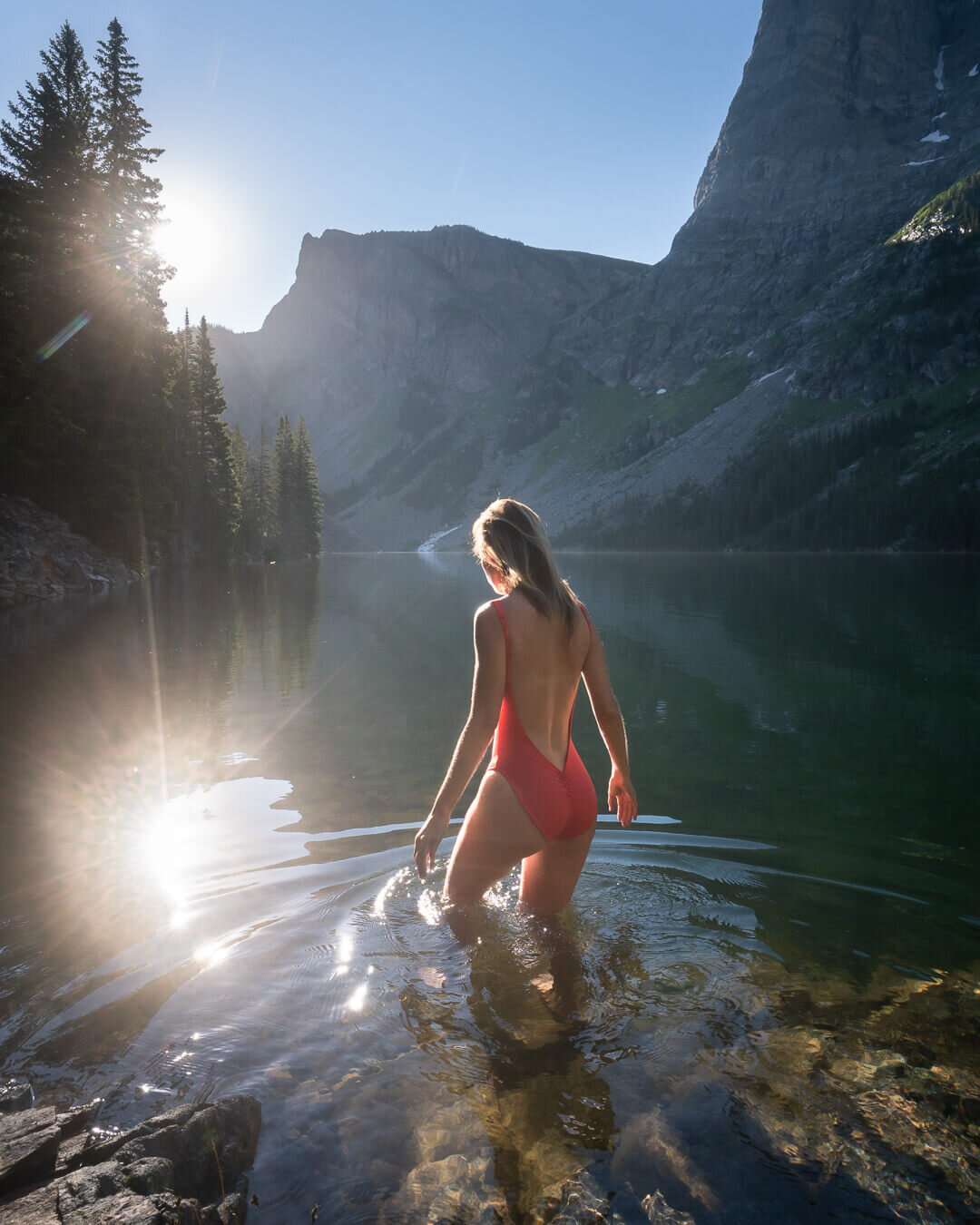
Another sustainable swimwear brand that I love is Londre Bodywear.
11. Avoid Animal Tourism
Wildlife attractions lure people from around the world to have intimate experiences with some of the planet’s most exotic animals. It’s not hard to resist. Animals bring people a lot of joy, and the exhilaration from having a close encounter with your favorite animal can feel life-altering. Unfortunately, most of the animals at these attractions are treated horrendously. This is true even at animal “sanctuaries” that purport to be acting in the animals’ best interest, or aiding in conservation efforts. In the end, it’s best to just avoid animal tourism. And of course, NEVER buy wildlife products—period.
12. Educate Others
Part of being a responsible traveler isn’t just reducing your own carbon footprint, saying no to plastic, or using local tourist guides. Get the word out by sharing how you are taking steps to change the way you travel with friends and family. Educate yourself and then educate others!
Whether you travel all the time or just occasionally, being more conscientious about your choices, and adopting small changes, can make a huge difference! Not only that, but you can influence the way others approach travel through your actions. Do you know of a great website for finding eco-friendly accommodations? Do you have a sustainable outdoor brand you really love? Don’t be afraid to share it with your community, because the little changes you make today will become habits tomorrow, and together we can create a systematic shift in the way people travel!
On that note, I’d love to hear any tips you have for responsible travel in the comments.
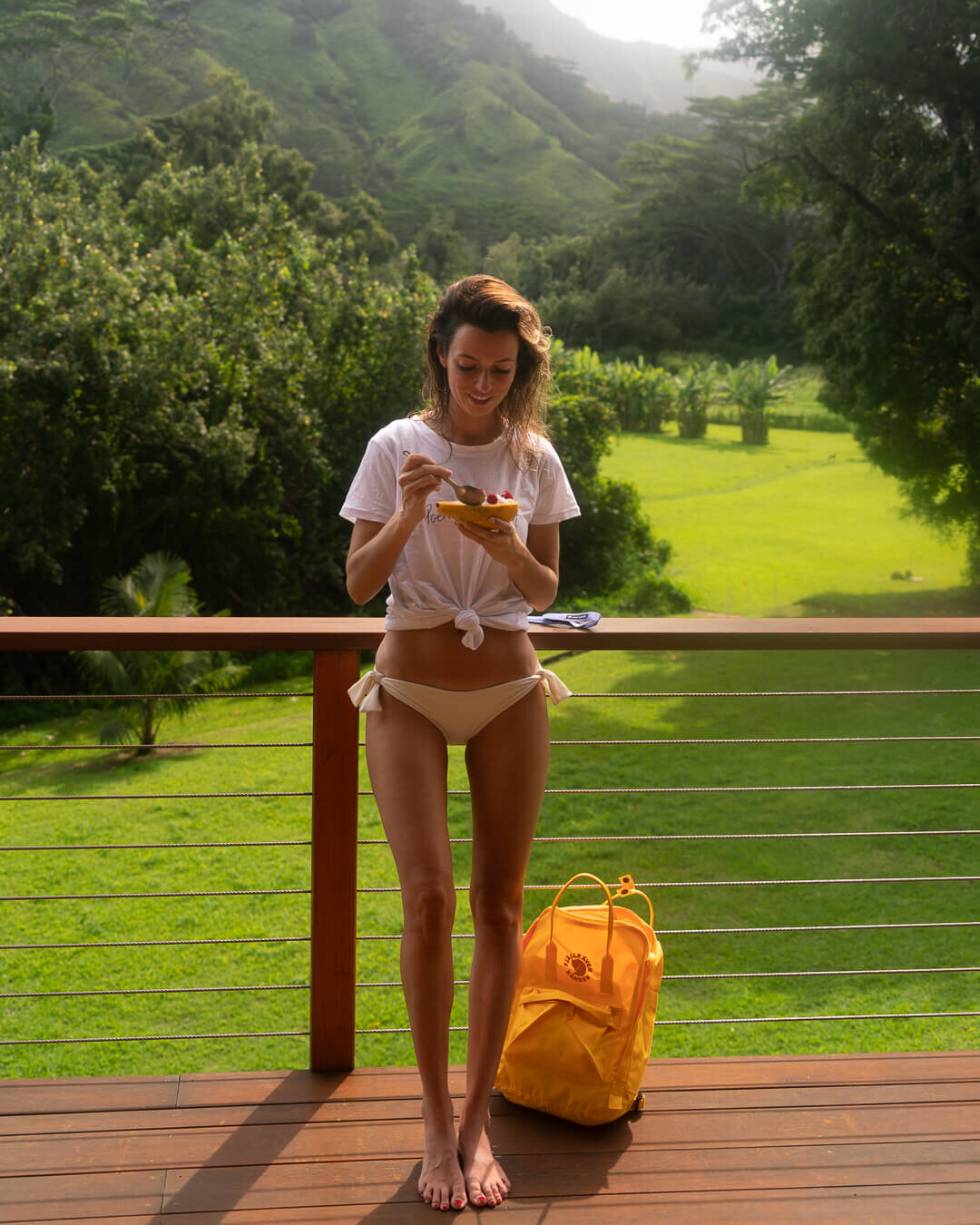
Eating delicious local produce in Kauai with my Snow*Peak Titanium Fork & Spoon Set. Also shown: the Fjallraven Re-Kanken Backpack.
Please note that there might be some affiliate links in this post. If you do choose to purchase something, I may earn a small commission – at no additional cost to you. As always, all ideas and opinions expressed in this post are entirely my own. I appreciate your support! – jess

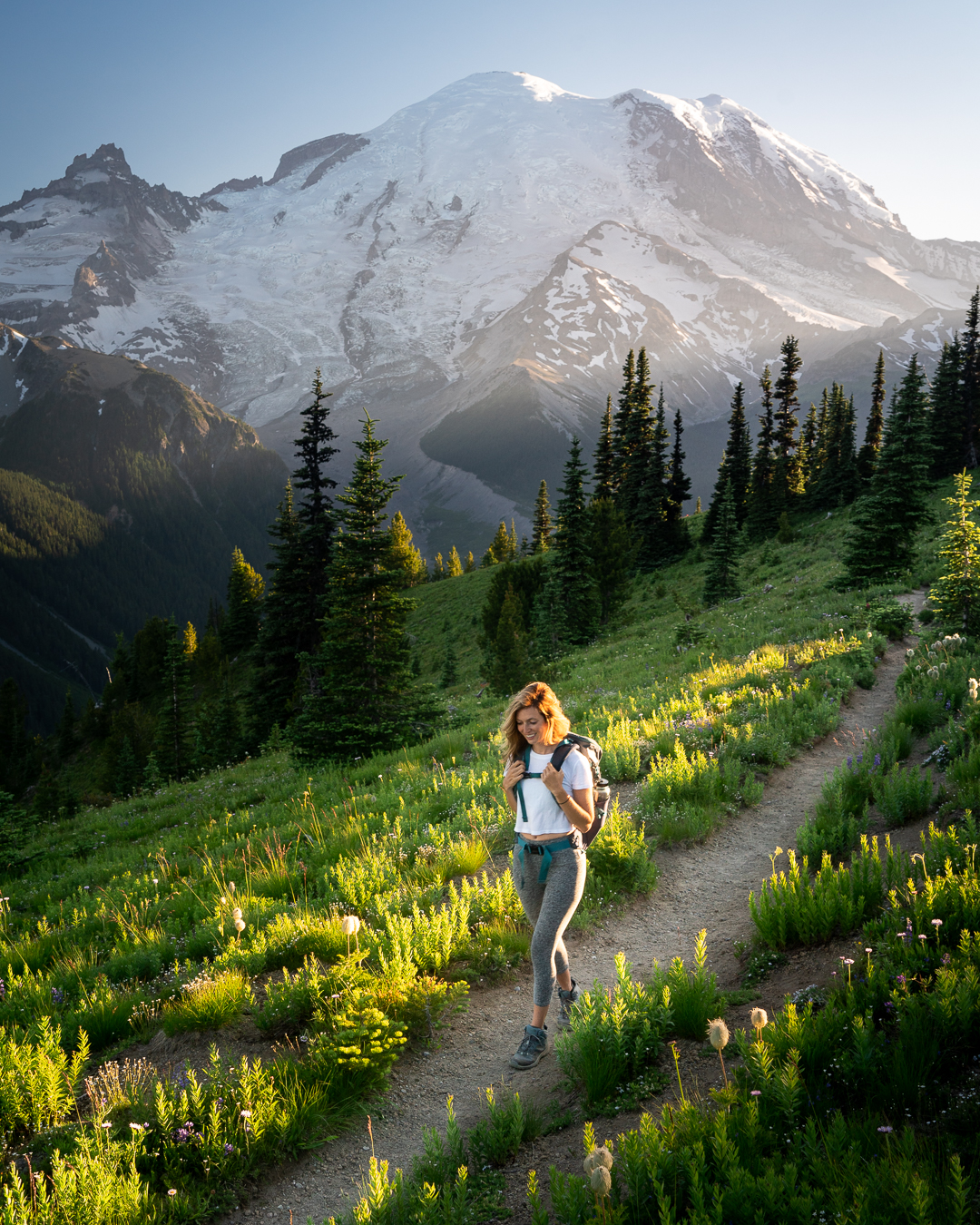
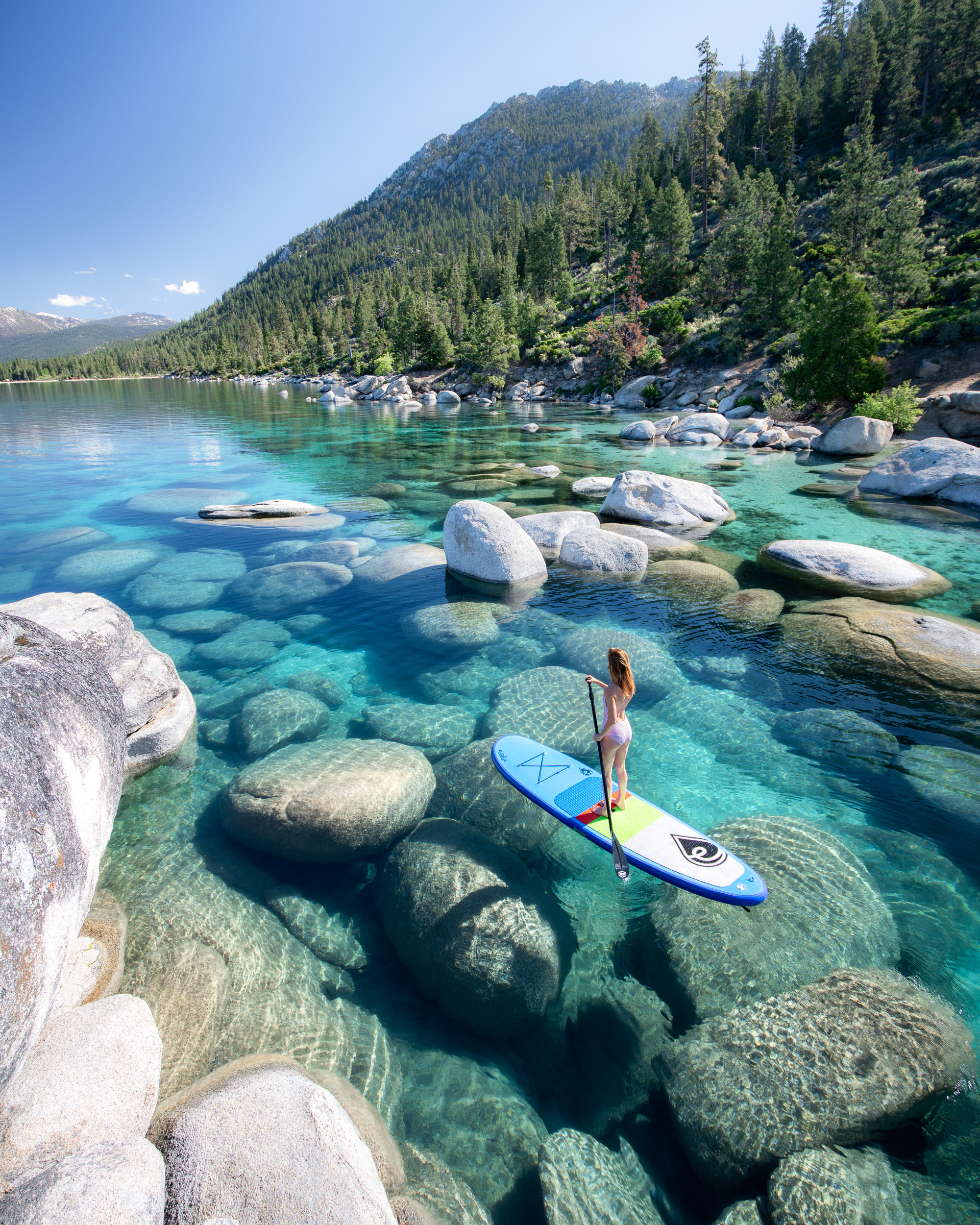
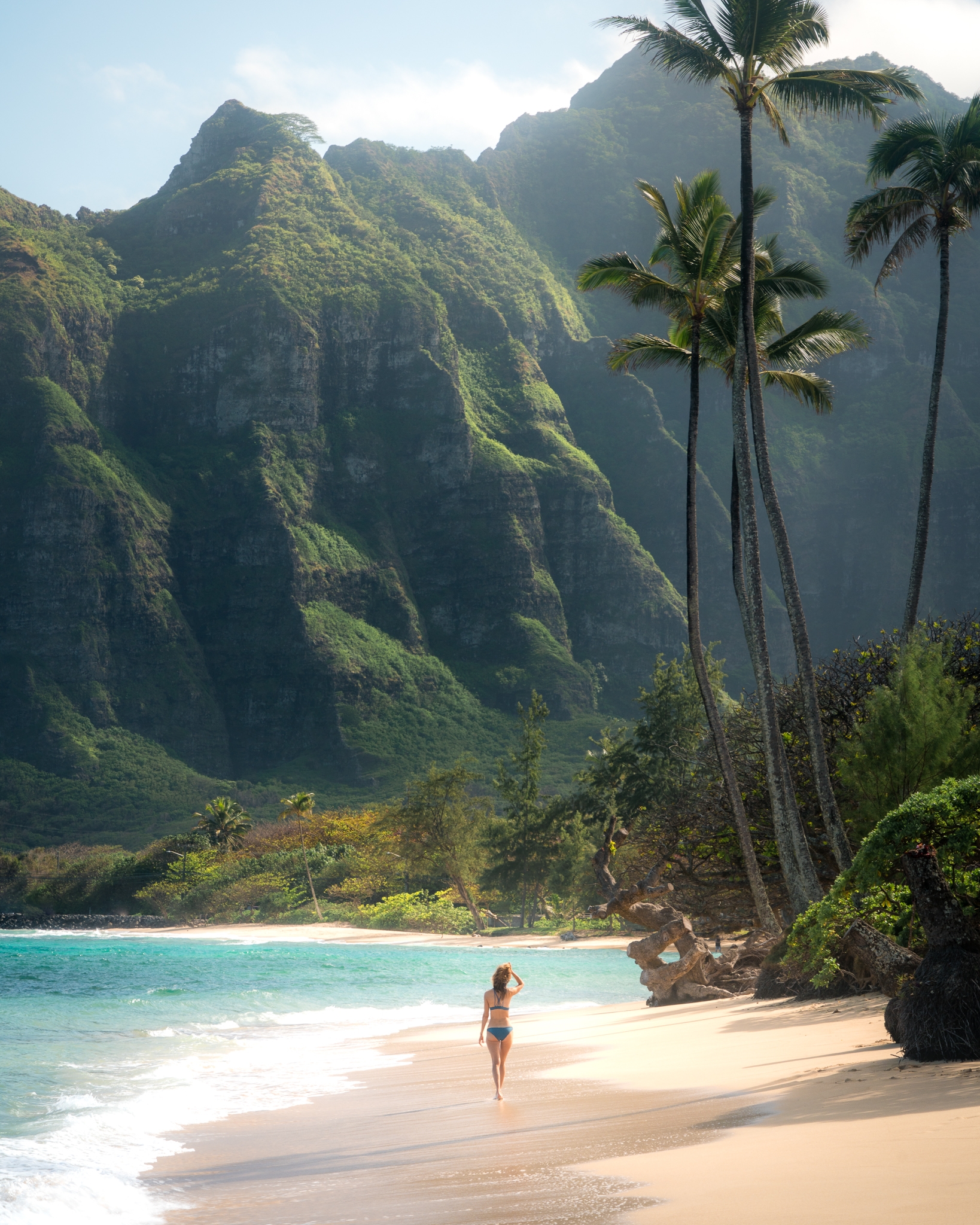
Didnt even know about Ecobnb! Thanks for that !
You’re very welcome! 🙂
Great post! Honestly all your suggestions are very achievable! Thanks for sharing.
Thanks!! I totally agree. Every little bit helps. ☺️
So helpful Jess. I’m going to use many of these in a talk soon. Thanks
So glad you liked it Gordon. Good luck with your talk!
Wow Jess!!
Thanks! ☺️✌️
Thank you so much for this comprehensive article with tips for responsible travel, it’s great you’re covering the topic and thank you for including us! We’re happy that we’re among your favorite sites inspiring for green travel and showing sustainable accommodations! 🙂
Best, Hanna from Green Pearls®
Thanks Hanna! I always have a good time looking at places on your site. 🙂
Quite a comprehensive list, Jess. Love it. I will try to incorporate one or more of these into my future trips!
Xoxo,
Tiffany
Phlanx’s Marketing Specialist
Thanks so much Tiffany. Every little bit helps. 🙂
I am so behind on your blogs and I’m so sorry for it. Firstly the list was quite well thought out and very in dept, you clearly have had experience on both sides of the spectrum, I love how you talk about the eco friendly side as well, about jumping ship from plastic and be friendly to reefs etc. Educate others and Pack Light are two I recommended to my friend
A very comprehensive list well done mate.
Stay safe out there
Also that plane shot!!!! Jesus is amazing
Tj xx
Thanks TJ! I’ve been wanting to write a blog post about this topic for a while, so I’m glad I finally got around to it. There are so many small things we can do to make a big difference! I hope you are staying healthy and safe out there!
Great list. I am already incorporating many of these when I travel from light packing, natural cosmetics to durable eco-clothing, reusable bottles or supporting local travel and local manufacturers. Problem is the air and car travel. In Europe, it was easy to travel by train and other means of public transportation. In North America, one is lost without car and airplanes.
So true. It’s very hard to avoid air and car travel within the United States and also for international travel. But I think that’s where making an effort to offset our carbon emissions can be very helpful. Awesome to hear that you are already incorporating so many of these!
Love this article! Do you know what the color way of your Cotopaxi Teca is called? It’s such a great combination and I want to find a used one of it now!
Hi Cay! I’m glad you liked the article. I’ve had that jacket for a few years at least, so I’m afraid I’m not sure what the color way was. I probably never knew to be honest. Sorry about that!